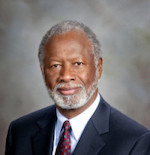200+ bipartisan groups, four bipartisan former governors, and coalition of bipartisan elections officials all stand opposed
More than 200 bipartisan groups, four bipartisan former Ohio governors, and Ohio’s entire system of bipartisan elections officials are all against a special August election proposed by Ohio Republican politicians to attack the power of voters and enshrine 41% minority rule over the state constitution.
This week, current Ohio Republican Gov. Mike DeWine said he would sign the bill to bring back a special August election for the attack.
Just months ago, DeWine also signed the bill axing August elections. He’s not the only current statewide politician who flip-flopped. Ohio Secretary of State Frank LaRose — who helped dream up this unprecedented assault on democracy in Ohio — also favored getting rid of August elections before he supported bringing this one back.
I have previously covered the fundamental power dynamics of this arrogant, condescending attack on the power of voters, to establish unchecked, extremist rule over the Ohio Statehouse and Ohio Constitution.
Republicans are now firmly a party of telling women, minority communities, health care professionals, educators, and young people what to do, and how they are and are not allowed to live their lives, personally and professionally.
The extremist power grab
In short, unconstitutionally gerrymandered Ohio Republican lawmakers who have been captured by special interests ignored the courts and constitution to get power, enacted one of the most restrictive voter laws in the nation, and are now attacking majority voter authority over the constitution.
The only reason they would have the votes needed to do this is because of their previous unconstitutional actions.

This is strategy straight out of an authoritarian playbook: 1.) Rob local voters of fair Ohio Statehouse districts by unconstitutionally gerrymandering them; 2.) Use that undue power to try to rob a majority of statewide voters from being able to hold the unconstitutionally gerrymandered legislature accountable.
Authoritarian is a strong word, but for politicians openly rigging government over the course of several years — against the voters, constitution, and Ohio Supreme Court — who are now attempting to remove the democratic power of a majority of voters to ultimately hold our elected politicians accountable, it’s accurate.
Meanwhile, every day at the Statehouse, they are using the radically regressive national Republican playbook to roll back Ohioans’ freedom.
The extremist abortion ban they are defending with every fiber in their being is the same ban that caused a 10-year-old rape survivor the flee the state for care, and caused horror story after horror story for months before it was put on hold.
They are working to overhaul Ohio’s system of higher education with one of the worst, most thoughtless laws they’ve put forward since their abortion ban caused massive confusion and chaos last summer. The higher ed overhaul promises to do the same. What might be a Statehouse record number of more than 500 people submitted testimony against it, and young people are already telling lawmakers they will flee the state if it’s enacted.
Ohio Republicans are also looking to ban gender-affirming care for trans youth, to ban trans youth from participating in high school and college athletics, to roll back prosecutorial discretion when it comes to felony reproductive health care charges, to target Ohio’s State Board of Education for standing up against racism; to dismantle full, contextualized, and thought-provoking discussions of history from all of Ohio’s classrooms; and to destroy every aspect of home rule for local elected officials that they don’t like.
The Republican Party has relinquished all legitimate claim on any “freedom” rhetoric. They are now firmly a party of telling women, minority communities, health care professionals, educators, and young people what to do, and how they are and are not allowed to live their lives, personally and professionally. And many Ohio Republicans are proving they will stop at absolutely nothing to be able to do so.
All of that said, we can even put all of it aside and just look at all the well-reasoned and practical bipartisan arguments against both an August special election and the 60% threshold for Ohio Constitutional amendments.
The bipartisan governors’ arguments

DeWine said Monday he would sign legislation to bring back the August election for the amendment change proposal.
Four bipartisan former Ohio governors — Bob Taft, John Kasich, Dick Celeste, and Ted Strickland — are all against making it harder for Ohio voters to pass constitutional amendments, as well as an August election for the 60% threshold proposal.
“It is especially bad public policy to revive the August special election for the purpose of voting on such a consequential constitutional amendment as SJR 2 or HJR 1 which would fundamentally change Ohioans’ voting and constitutional rights,” Former Republican Gov. Taft wrote in an open letter to elected leaders.
Taking a swipe at LaRose’s flip-flop, Taft said, “I concur with current Secretary of State Frank LaRose when he declared, ‘August special elections aren’t good for the taxpayer, elections officials, voters or the civic health of our state.’”
But Taft’s next point is his most compelling, because while Republican lawmakers have said they are doing this to stop abortion rights and further anti-gerrymandering reform, it has cascading repercussions that could touch almost any issue any Ohioan could imagine:
“For the state to be able to issue general obligation debt to finance or build highways or schools, to protect the environment or create jobs, you must persuade voters to approve an amendment to the Constitution,” Taft noted.
“If [Republicans] honestly thought that 60% of the vote was what should be required for a constitutional amendment, then they should write down language into their constitutional amendment and say, ‘This will only become effective if 60% of Ohioans vote for it.’” — former Gov. Dick Celeste
Dream away, dear Ohioans, about how this will affect you.
And yet DeWine will still sign off on a traditionally low-turnout, expensive August election for extremist, gerrymandered lawmakers’ vicious attack on the power of Ohio voters, after those lawmakers have repeatedly, brazenly disrespected him: On the COVID pandemic; on his health care authority, even just this week on road safety, one of his biggest issues.
For his part, DeWine gave his rationale this way: “I think that if both houses approve this, that’s the direction they want to go, I’m going to sign it. I think that there is some advantage to having these matters over with and August will do that.”

See how DeWine tries to make this sound legitimate by indicating that he’s just dutifully following lawmakers’ wishes?
Keep in mind that those same lawmakers only have their supermajority votes to do this because DeWine helped illegally gerrymander them into office.
Former Democratic Gov. Strickland understands the power dynamics at play, and the obvious power grab of Republican lawmakers trying to move the goal posts in this way at this time.
“I guess I can understand why some politicians that have a gerrymandered hold on the state have would like to take away the direct voice of the people,” Strickland told the Columbus Dispatch. “That would give them all power.”
Strickland called the effort a “shameful attempt” to keep Ohio women from making decisions about their reproductive health at the ballot box.
Former Democratic Gov. Dick Celeste made an extremely salient point about the fundamental hypocrisy of the proposal when he observed, “If they honestly thought that 60% of the vote was what should be required for a constitutional amendment, then they should write down language into their constitutional amendment and say, ‘This will only become effective if 60% of Ohioans vote for it.’”
Meanwhile, former Republican Gov. Kasich still remembers SB 5 in 2011, when he tried to roll back collective bargaining rights for Ohio’s public employees, and was overruled by the voters after a massive political mobilization against him.
“Ohio is stronger when we can all lend our voices and we all have an equal chance to participate in the work of our state’s democracy,” Kasich told the Dispatch. “I’ve experienced that firsthand having policies backed by myself and a majority of the legislature’s members overturned at the ballot box and it never occurred to me to try to limit Ohioans’ right to do that. It wouldn’t have been right then, and it isn’t right now.”
I’m not sure whether Kasich means it’s not right morally, ethically, intellectually, or politically, but for each of those, he is correct.

Focusing just on the last, I’ve heard from plenty of analysts who believe Ohio Republicans are making a grave political error with this effort, and think that it will blow up in their faces just like SB 5 did with voters in 2011.
Either way, one thing is clear: stacked up against these four former governors, DeWine is revealed as just another unscrupulous, amoral cynic helping along each authoritarian political attack on human and voter rights and voter power in Ohio, regardless of his duties, responsibility and oath to Ohioans, and legacy in Ohio history.
The bipartisan elected officials’ arguments
Do you remember all those elections restrictions Ohio Republicans and DeWine made law this year? The ones now known to national media as one of the most restrictive elections and voter laws in the country?
Well, it turns out that a big concern about an August election from bipartisan election officials is all the administrative work they need to do for all of the Republicans’ new voter restrictions to be in place.

“Over the last several years, elections officials have been through so, so much. And in terms of the timelines of an August special election and so much more, it just makes for a very hectic schedule and a very difficult operation,” Ohio Association of Elections Officials Trustee Frankie DiCarlantonio told the Statehouse News Bureau.
The bipartisan elections officials have now formally opposed an August special election, citing that as one of their concerns, though they do have others as well, including the $20 million price tag that resulted in only 7.9% turnout in 2022.
“This $20 million is definitely a burden to taxpayers. The taxpayers of Ohio just paid for a second primary election in 2022 that was state-funded as well,” DiCarlantonio said. “Obviously, we’re not trying to step on the toes of the legislature and their power to appropriate state funds however they want, but at the end of the day, we want to make this known that this may not be a good use of taxpayer dollars.”
And remember, Ohio was forced to have last year’s August primary because of Republicans’ bad faith legal strategy to run out the clock on gerrymandering reform. Now they want to have a special election this August to try to kill any future anti-gerrymandering reform entirely. So that’s $40 million dollars total for them to destroy representative democracy for Ohio voters.
But their other attack on voters — the new voting restrictions — hurts their effort to attack voters this third time.
Bad proposals done for unethical reasons have a way of undermining each other — it’s a consequence of only caring about power and not caring about the actual consequences of the destruction they are undertaking.
But what does DeWine think of the bipartisan election officials’ concerns? He doesn’t care.
“I don’t have any doubt that we can run a good election in August. We’ve done it before,” DeWine said.
What happens next?
LaRose has informed lawmakers that they need to move by May 10 in order for an August special election to take place. The Ohio Senate has passed their version, and now both their resolution for 60% and their bill for an August election sit in Ohio House committees.

Everything still hangs for now on the decisions of Ohio House Speaker Jason Stephens.
This is a historic time in Ohio politics. Ohio voters have had 50% plus one majority say over the Ohio Constitution since 1851, and the ability to propose citizen-led constitutional amendments since 1912. Now the power of the majority of Ohio voters is under grave threat in the most insidious way possible.
This moment is unprecedented in Ohio history as we face a years-long, all-out assault on the power and freedoms of Ohio voters.
We will soon find out whether the words of 200+ bipartisan groups, four bipartisan former governors, and the entire association of bipartisan elections workers in Ohio make any difference; or if Ohio’s current Republican lawmakers and governor disrespect all of them with just as much disdain as has been shown to Ohio voters.
• • •• • •
This story is provided by Ohio Capital Journal, a part of States Newsroom, a national 501 (c)(3) nonprofit. See the original story here.















